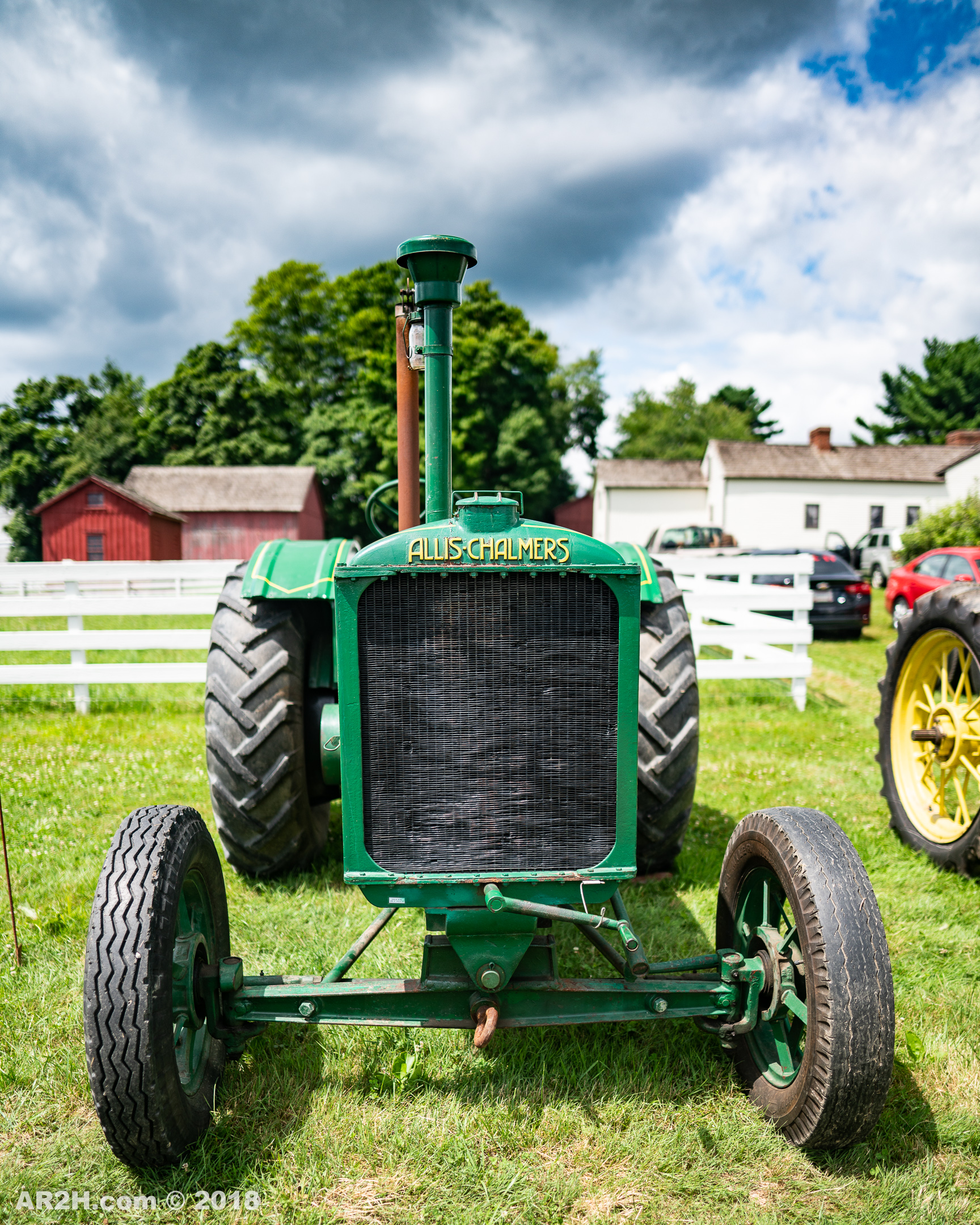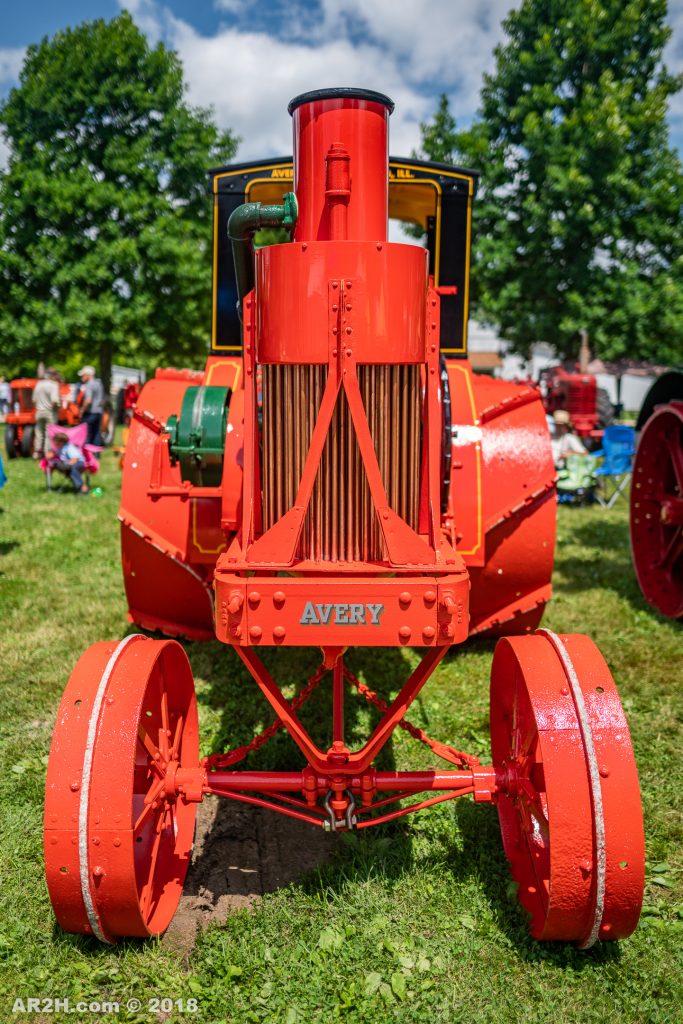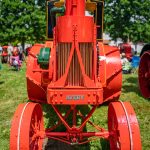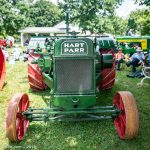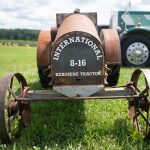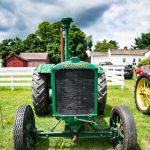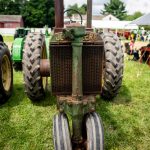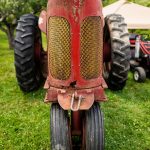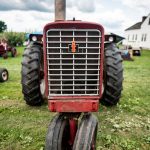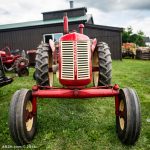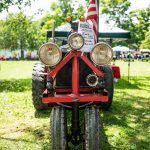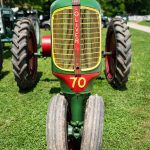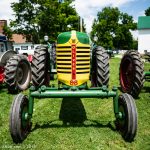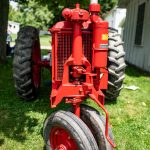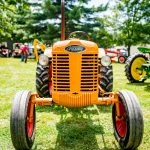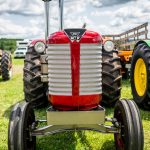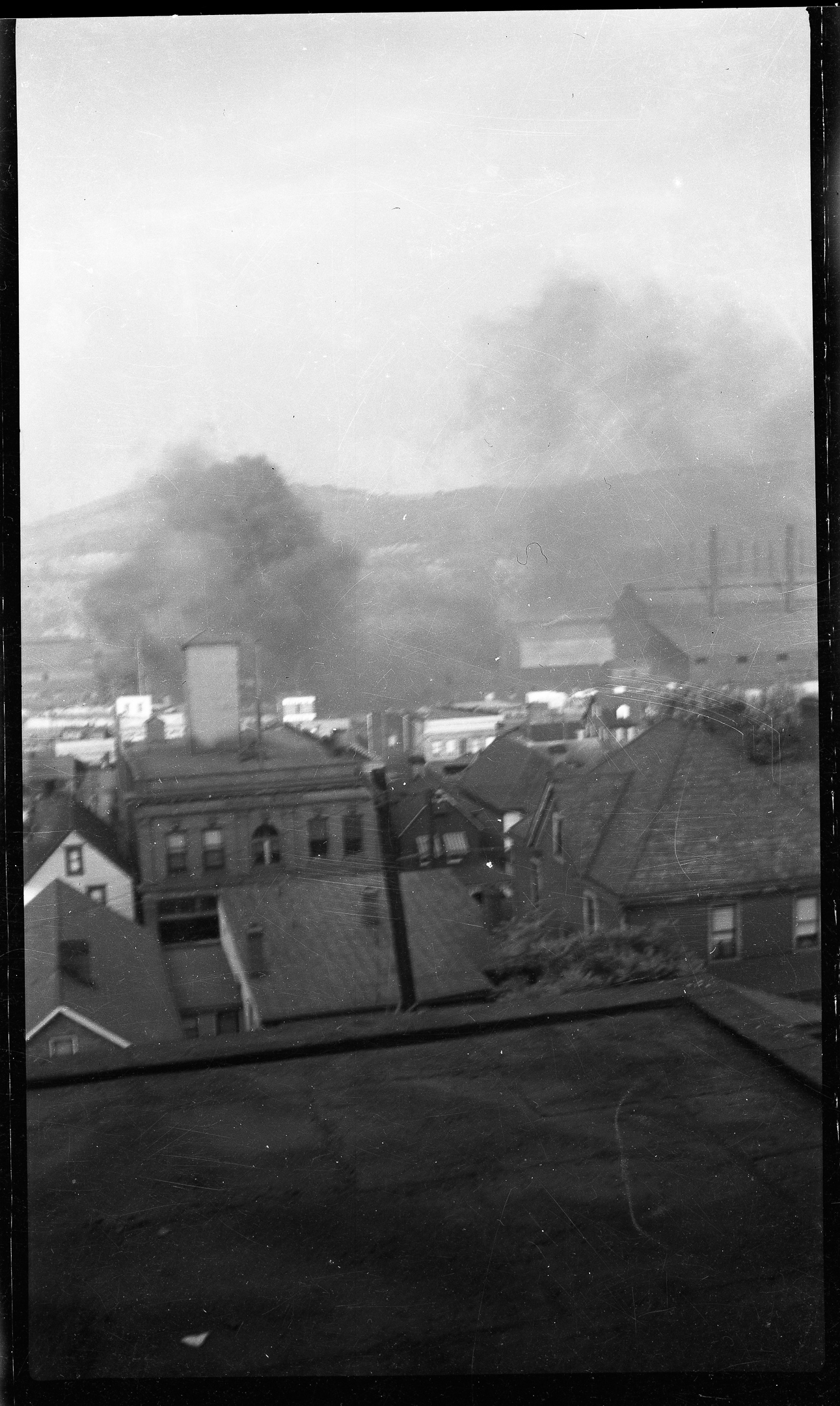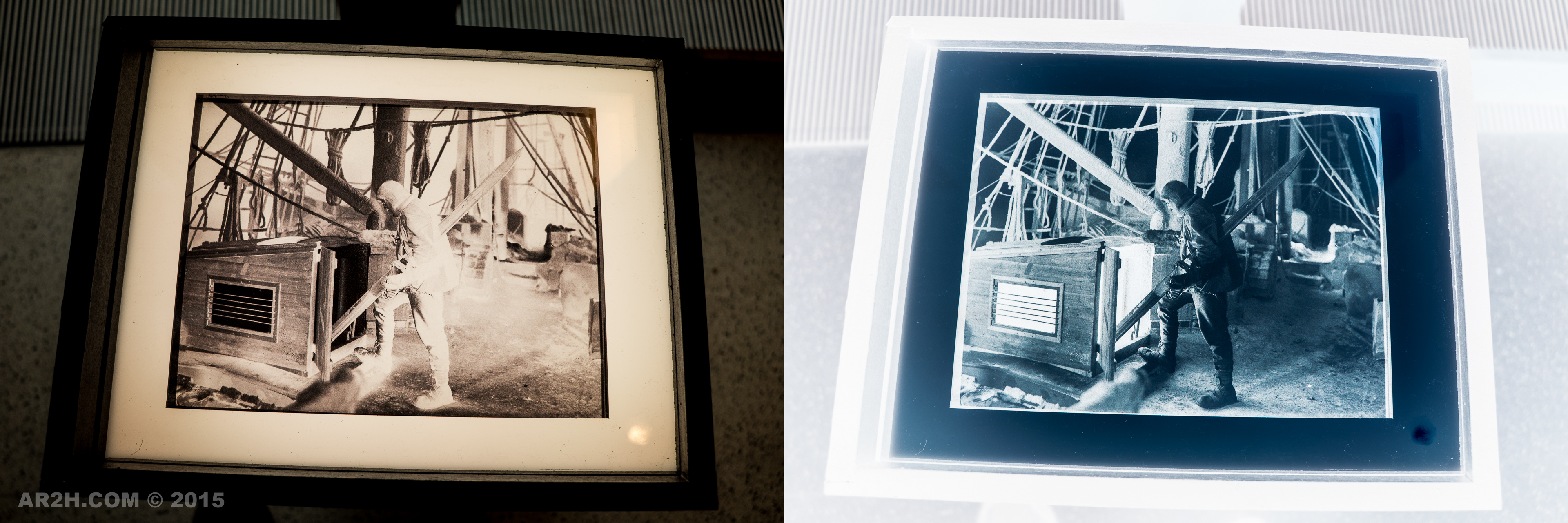Every year the Historical Engine Society of Burton, Ohio puts on a wonderful antique engine and tractor show. One of the best aspects of this show is that it takes place at the beautiful Century Village Museum on the Southeast corner of the square in Burton. This allows you to see this old equipment amongst old buildings on a town square. It’s a great setting.
There are many interesting things to see at these shows but something I’m always interested in is the change in the aesthetic design of tractors. You would think that technology would evolve from simple to complicated. But this isn’t the case at all. From a basic artistic design standpoint (and often from a mechanical standpoint as well), tractors started complicated and became less so with time. Here I’m just going to show the front end of tractors.
Here is an Avery which is probably from around 1920:
This is a crazily complicated copper tube heat exchanger with a chimney on top. Big bolted fabrications, links and angles all over the place. But the key thing to look at is that everything is normal geometric shapes. This individual simplicity leads to a great complexity when all those shapes are added together.
Now let’s go to a stunning Massey Ferguson from 1960:
Alright, the tractor probably didn’t leave the factory with a metal flake paint job and polished chrome. But this streamlined design is a perfect example of mid-century design. The first time I saw this tractor I had to run home and research to make sure that Raymond Loewy didn’t design it. What you see are stamped and cast components, a complete difference to the Avery. These pieces are individually more complicated but their custom shapes lead to a much simpler look.
Or this could all just be the same generational aesthetic difference like you see between Victorian houses and case study houses.
(Always kill the point of your post by the end of your post. Confused writing is the way of the internet and it is wrong to try fix that.)
Anyway, here are some tractor fronts:

